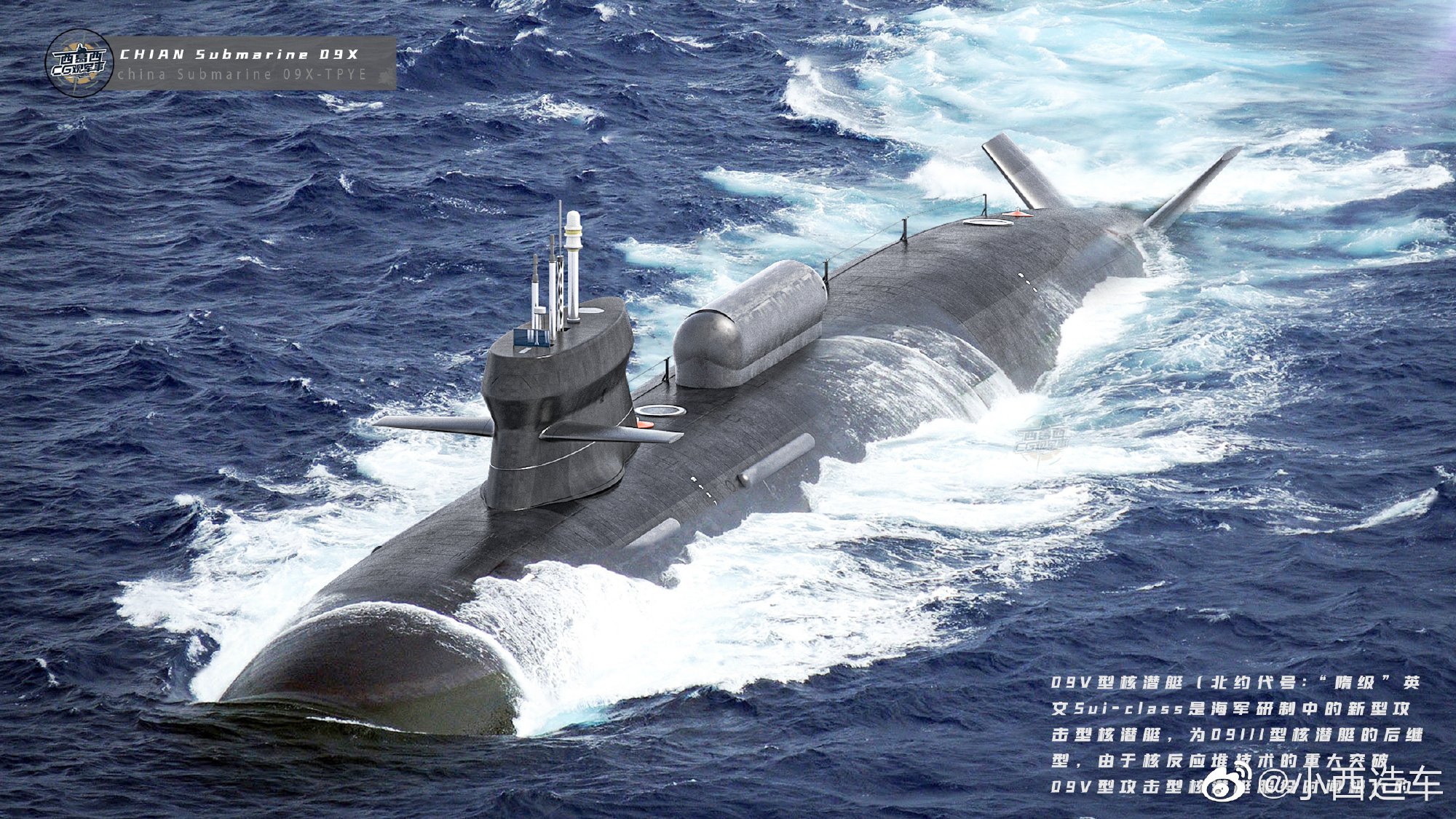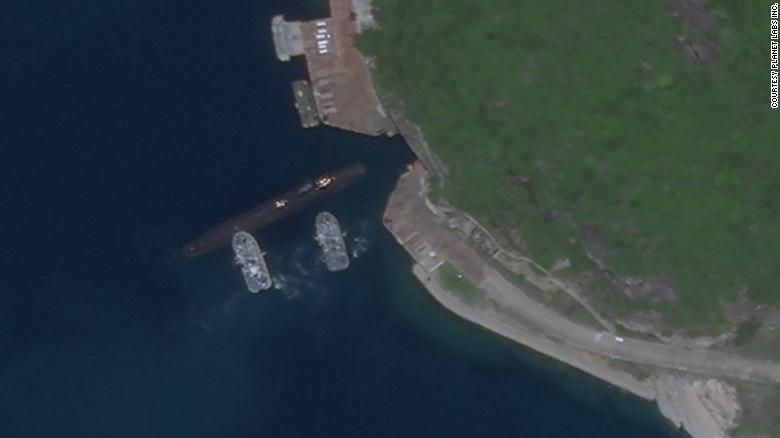China is currently employing what is believed to be the world’s largest antenna to improve its surveillance and communication capabilities, allowing long-distance communications with submarines.
ALSO READ: Turkey’s Hurjet Challenges India’s Tejas LCA For Malaysian Fighter Jet Contract After JF-17 Exit — Reports
The exact site of the facility is unknown, however, it is thought to be located in the Dabie mountains, a protected nature reserve spanning the provinces of Hubei, Anhui, and Henan, South China Morning Post reported.
The antenna, which is made out of a network of cables and pylons similar to those seen in regular power lines, would appear from space as a massive cross measuring more than 100 kilometers (62 miles) long and wide.
Copper nodes, on the other hand, are deeply embedded in thick granite at the endpoints of those lines. Two strong subsurface transmitters, each capable of operating independently in the event that one is broken, charge one megawatt of electrical current and transform the Earth into a massive radio station.

The facility was built to provide underwater communications across a distance of 3,000 kilometers (1,900 miles), which is long enough to reach Guam, the largest US military post in the western Pacific, said project’s lead engineer Zha Ming and his colleagues, from the Wuhan Maritime Communication Research Institute.
Receiving devices implanted 200 meters (700 feet) below the surface on the seafloor — can receive signals from the gigantic antenna 1,300 kilometers (800 miles) offshore, according to a study published in the Chinese Journal of Ship Research last month.
In 2019, SCMP reported that China had finished building a giant experimental radio antenna on a piece of land almost five times the size of New York City. The antenna, which was constructed in a top-secret site, emits low-frequency signals that may be used to converse with submarines, allowing the navy to operate at deeper depths without having to resurface.

The project took 13 years to complete, and the antenna is housed in a 1,400-square-mile site. The ELF system can identify minerals and oil and can be utilized as a seismic sensor to comprehend what occurs to the ground before significant earthquakes, in addition to communicating with submarines.
However, SCMP made no mention in the latest report of whether the antenna stations in question are the same, but given their presumed location and operational goals, it can be inferred they are.
The ELF Technology
The extremely low frequency (ELF) facility can create electromagnetic waves with frequencies ranging from 0.1 to 300 Hz. These radio waves have the ability to travel long distances both above and below ground. Officially, the project is part of China’s 11th five-year plan for civilian uses, however, it can also be employed for military application.
Scientists believe that a submarine hiding hundreds of meters beneath the sea can pick up its signals, eliminating the chance of the vessel having to re-emerge to receive transmissions. The project comes on the heels of China’s first military-grade super-low frequency transmission station, which was completed in 2009.
The following year, a Chinese nuclear submarine effectively spoke with the station from the deep sea, marking China the third country in the world to do so after the US and Russia.
China and Russia also collaborated on a test to explore how far a signal may travel through the surface. The signal was received by a Russian station from a distance of 7,000 kilometers (4,400 miles), but the enhanced distance came at a cost: the link was one-way and could only convey encrypted text messages.
China antenna turns Earth into giant radio station, with signals reaching Guam https://t.co/BE9zCVhGgF
— South China Morning Post (@SCMPNews) December 2, 2021
Since an ELF signal’s wave might be as vast as a continent, it’s tough to generate. To complete the task, a traditional radio tower would have to be at least 1,000 kilometers (600 miles) tall. China is not the first country to carry out a project like this. Previously, similar projects were carried out in other nations too.
The concept of constructing an Earth-bound low-frequency antenna dates back to the 1960s. In 1968, the US Navy envisioned Project Sanguine, a massive ELF antenna that would have spanned two-fifths of Wisconsin and allowed submarines to communicate undersea. From the late 1980s, an antenna with two crossing lines, each about 70km (40 miles) long, was built and began emitting signals at a frequency of 76Hz.

After failing to meet the military’s requirements, the project was discontinued in 2005. The United States shifted its focus to alternative technologies, such as using lasers to manipulate the atmosphere to generate low-frequency waves. The Soviet Union built Zevs, a far more powerful plant on the Kola Peninsula, just within the Arctic Circle, in the 1980s.
The Zevs antenna featured an 82-hertz primary frequency and was powered by two 60-kilometer electric cables, sending out signals powerful enough to reach Russian nuclear submarines lying deep beneath the Arctic ice sheet. Since then, Russia has aided China in the development of its own systems, which may include additional ELF stations in coastal locations.
China Wants to Control The Waterways?
Over the past few years, China has increased its military drills near two strategically important waterways: the Bashi Channel and the Miyako Strait.
The Bashi Channel stretches from the Philippines’ northern island of Luzon and the Taiwanese island of Orchid, linking the South China Sea to the western Pacific Ocean. The Miyako Strait connects the Japanese islands of Miyako and Okinawa, providing a tiny corridor across Japan’s exclusive economic zone with international oceans and airspace.
The People’s Liberation Army Navy (PLAN) uses both of these waterways to enter the Pacific Ocean. The Miyako Strait and Bashi Channel are located along the “first island chain,” which stretches from the Japanese archipelago to Taiwan and the Philippines. The two canals are first and foremost regarded as the PLA’s most critical entry points into the Pacific Ocean, and hence vital to the protection of Chinese economic interests overseas.
BREAKING: Chinese PLAN's Liaoning aircraft carrier passed through the Miyako Strait between Okinawa and Miyako Island on Saturday, with five accompanying vessels.
Source: @jointstaffpa https://t.co/LLqJj9ngUi
H/T @jljzen pic.twitter.com/U1upAibQvM
— Ryan Chan 陳家翹 (@ryankakiuchan) April 4, 2021
As earlier reported by Eurasian Times, the US has reportedly decided to send extra fighter jets including F-22 Raptors, F-35 Lightning II, B2 stealth bombers to Australia to deter possible Chinese military aggression and threats. Additionally, the US also wants to increase its military presence in and around its military base in Guam.
The increasing presence might lead to a potential confrontation between the two superpowers. China has made it obvious that it wants to annex Taiwan, which Beijing calls a breakaway province. And repeated intrusions into Taiwan’s Air Defense Identification Zone show that China is determined to seize Taiwan, even via military action.
4/All of this signals #Japan’s response to Chinese activity in & around the E China Sea—the biggest trouble spots for Japan being the Tokara Strait, the Miyako Strait, and the Senkakus. (Shown on the pic below?)
Makes sense why Japan picked those places for new bases, eh? pic.twitter.com/aAlWb8nCd2
— Michael Bosack (@MikeBosack) March 17, 2019
Simultaneously, the US and its allies might exploit the two waterways to encircle Chinese military forces. Japan, for example, has been installing new anti-ship missile batteries on Okinawa prefectural islands that can cover the whole Miyako Strait and recently decided to increase their missiles to over 1,000 km.
Using the new antenna, the PLA Navy may increase its communications infrastructure and better direct its submarines to counter the US and its allies.
- Contact the author at ashishmichel@gmail.com
- Follow EurAsian Times on Google News




